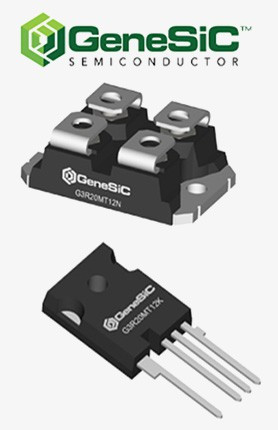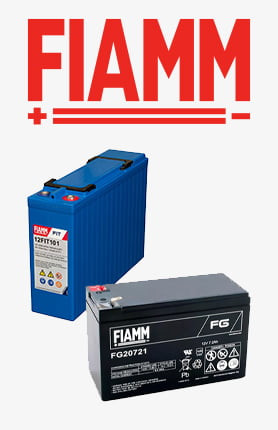Ви повинні увійти в систему
-
WróćX
-
компоненти
-
-
Category
-
Напівпровідники
- Діоди
- Тиристори
-
Електро-ізольовані модулі
- Електроізольовані модулі | ВІШАЙ (ІЧ)
- Електроізольовані модулі | INFINEON (EUPEC)
- Електроізольовані модулі | Семікрон
- Електроізольовані модулі | POWEREX
- Електроізольовані модулі | IXYS
- Електроізольовані модулі | ПОСЕЙКО
- Електроізольовані модулі | ABB
- Електроізольовані модулі | ТЕХСЕМ
- Przejdź do podkategorii
- Випрямні мости
-
Транзистори
- Транзистори | GeneSiC
- Модулі SiC MOSFET | Mitsubishi
- Модулі SiC MOSFET | STARPOWER
- Модулі ABB SiC MOSFET
- Модулі IGBT | MITSUBISHI
- Транзисторні модулі | MITSUBISHI
- Модулі MOSFET | MITSUBISHI
- Транзисторні модулі | ABB
- Модулі IGBT | POWEREX
- Модулі IGBT | INFINEON (EUPEC)
- Напівпровідникові елементи з карбіду кремнію (SiC)
- Przejdź do podkategorii
- Драйвери
- Блоки потужності
- Przejdź do podkategorii
- Електричні перетворювачі
-
Пасивні компоненти (конденсатори, резистори, запобіжники, фільтри)
- Резистори
-
Запобіжники
- Мініатюрні запобіжники для електронних плат серії ABC і AGC
- Швидкі трубчасті запобіжники
- Повільні запобіжники з характеристиками GL / GG і AM
- Ультрашвидкі плавкі запобіжники
- Швидкі запобіжники: британський та американський стандарт
- Швидкі запобіжники. Європейський стандарт
- Тягові запобіжники
- Високовольтні запобіжні
- Przejdź do podkategorii
-
Конденсатори
- Конденсатори для електродвигунів
- Електролітичні конденсатори
- Снабберні конденсатори
- Конденсатори потужності
- Конденсатори для DC ланцюгів
- Конденсатори для компенсації пасивної потужності
- Високовольтні конденсатори
- Конденсатори великої потужності для індукційного нагріву
- Конденсатори для зберігання імпульсів та енергії
- Конденсатори DC LINK
- Конденсатори для ланцюгів змінного / постійного струму
- Przejdź do podkategorii
- EMI фільтри
- Іоністори (супер-конденсатори)
-
Захист від стрибків напруги
- Захист від перенапруги для коаксіального застосування
- Захист від перенапруг для систем відеоспостереження
- Захист від перенапруги для силових кабелів
- Розрядники перенапруги для світлодіодів
- Розрядники перенапруги для фотоелектрики
- Захист системи зважування
- Захист від перенапруги для Fieldbus
- Przejdź do podkategorii
- Przejdź do podkategorii
-
Реле та контактори
- Реле та контактори - теорія
- Напівпровідникові реле AC 3-фазні
- Напівпровідникові реле DC
- Контролери, системи управління та аксесуари
- Системи плавного пуску і реверсивні контактори
- Електромеханічні реле
- Контактори
- Оборотні перемикачі
-
Напівпровідникові реле AC 1-фазні
- РЕЛЕ AC 1-ФАЗНЫЕ СЕРИИ 1 D2425 | D2450
- Однофазное реле AC серии CWA и CWD
- Однофазное реле AC серии CMRA и CMRD
- Однофазное реле AC серии PS
- Реле AC двойное и четверное серии D24 D, TD24 Q, H12D48 D
- Однофазні твердотільні реле серії gn
- Однофазні напівпровідникові реле змінного струму, серія ckr
- Однофазні реле змінного струму ERDA та ERAA для DIN-рейки
- Однофазні реле змінного струму для струму 150А
- Подвійні твердотільні реле, інтегровані з радіатором для DIN-рейки
- Przejdź do podkategorii
- Напівпровідникові реле AC 1-фазні для друкованих плат
- Інтерфейсні реле
- Przejdź do podkategorii
- Індукційні компоненти
- Радіатори, варистори, термічний захист
- Вентилятори
- Кондиціонери, обладнання для шаф електричних, охолоджувачі
-
Батареї, зарядні пристрої, буферні блоки живлення та інвертори
- Батареї, зарядні пристрої - теоретичний опис
- Літій-іонні батареї. Спеціальні батареї. Система управління акумулятором (BMS)
- Батареї
- Зарядні пристрої та аксесуари
- Резервне джерело живлення ДБЖ та буферні джерела живлення
- Перетворювачі та аксесуари для фотоелектрики
- Зберігання енергії
- Паливні елементи
- Літій-іонні акумулятори
- Przejdź do podkategorii
-
Автоматика
- Futaba Drone Parts
- Кінцеві вимикачі, Мікровимикачі
- Датчики Перетворювачі
- Пірометри
- Лічильники, Реле часу, Панельні вимірювальні прилади
- Промислові захисні пристрої
- Світлові і звукові сигнальні установки
- Термокамери, Тепловізори
- LED-екрани
- Керуюча апаратура
-
Реєстратори
- Реєстратори температури з записом на стрічку і з цифровим індикатором - AL3000
- Мікропроцесорні реєстратори з екраном LCD серія KR2000
- Реєстратор KR5000
- Вимірювач з функцією реєстрації вологості і температури HN-CH
- Експлуатаційні матеріали для реєстраторів
- Компактний графічний реєстратор 71VR1
- Реєстратор KR 3000
- Реєстратор PC серії R1M
- Реєстратор PC серії R2M
- Реєстратор PC, USB, 12 ізольованих входів – RZMS
- Реєстратор PC, USB, 12 ізольованих входів – RZUS
- Przejdź do podkategorii
- Przejdź do podkategorii
-
Провід, літцендрат, гофровані рукави, гнучкі з'єднання
- Дроти
- Багатожильні дроти Lica
-
Кабелі і дроти для спеціальних застосувань
- Подовжувальні та компенсаційні дроти
- Дроти для термопар
- Приєднувальні дроти для датчиків PT
- Багатожильні дроти темп. -60C до +1400C
- Дроти середньої напруги
- Дроти запалювання
- Нагрівальні дроти
- Одножильні дроти темп. -60C до +450C
- Залізничні дроти
- Нагрівальні дроти для вибухонебезпечних зон
- Przejdź do podkategorii
- Оболонки
-
Плетені кабелі
- Плоскі плетені кабелі
- Круглі плетені кабелі
- Дуже гнучкі плетені кабелі - плоскі
- Дуже гнучкі плетені кабелі - круглі
- Мідні циліндричні плетені кабелі
- Мідні циліндричні плетені кабелі і кожуха
- Гнучкі заземлювальні стрічки
- Циліндричні плетені дроти з лудженої і нержавіючої сталі
- Мідні ізольовані плетені дроти PCV - температура до 85 градусів C
- Плоскі алюмінієві плетені дроти
- З'єднувальний набір - плетені дроти і трубки
- Przejdź do podkategorii
- Аксесуари для тяги
- Кабельні наконечники
- Ізольовані еластичні шини
- Багатошарові гнучкі шини
- Системи прокладки кабелю (PESZLE)
- Шланги
- Przejdź do podkategorii
- Zobacz wszystkie kategorie
-
Напівпровідники
-
-
- Постачальники
-
додатки
- Energy bank
- ІНДУКЦІЙНИЙ НАГРІВ
- Автоматизація HVAC
- Верстати з ЧПУ
- ВИМІРЮВАННЯ ТА РЕГУЛЮВАННЯ ТЕМПЕРАТУРИ
- Вимірювання та регулювання температури
- ГІРНИЧОДОБУВНА ПРОМИСЛОВІСТЬ, СТАЛЕЛИВАРНІ КОМБІНАТИ, ГЗК
- ДВИГУНИ І ТРАНСФОРМАТОРИ
- ЕНЕРГЕТИКА
- ЗВАРЮВАЛЬНІ АПАРАТИ
- КОМПЛЕКТУЮЧІ ДЛЯ РОЗПОДІЛЬНИХ, ТЕЛЕКОМУНІКАЦІЙНИХ ШАФ І ШАФ УПРАВЛІННЯ
- МАШИНИ ДЛЯ ДЕРЕВООБРОБКИ ТА СУШІННЯ ДЕРЕВИНИ
- ПОЛІГРАФІЯ
- ПРИВІД ПОСТІЙНОГО І ЗМІННОГО СТРУМУ
- ПРИЛАДИ ТА ОБЛАДНАННЯ ДЛЯ ВИБУХОНЕБЕЗПЕЧНИХ ЗОН (EX)
- ПРИСТРОЇ БЕЗПЕРЕБІЙНОГО ЖИВЛЕННЯ (UPS) І ВИПРЯМЛЯЧІ
- ПРОМИСЛОВІ ЗАСОБИ ЗАХИСТУ
- ПРОМИСЛОВА АВТОМАТИКА
- ТЕРМОФОРМОВОЧНІ МАШИНИ
- ТЯГОВИЙ ПРИВІД
-
монтаж
-
-
Індуктори
-
-
Індукційні прилади
-
-
https://www.dacpol.eu/pl/naprawy-i-modernizacje
-
-
Сервіс
-
- Контакт
- Zobacz wszystkie kategorie
Basics of Electromagnetic Compatibility: What Is It and Why Is It Important? 5 of 8

Basics of Electromagnetic Compatibility: What Is It and Why Is It Important? 5 of 8
Methods and Techniques for Electromagnetic Compatibility (EMC) Testing are Essential in Ensuring Electronic Devices' Compliance with EMC Standards and Regulations.
EMC testing aims to assess the device's immunity to electromagnetic interferences and the emission of interferences generated by it. Here are some key methods and techniques for EMC testing:
Radio Emission Testing: This type of testing focuses on measuring the level of electromagnetic emission generated by the device. Radio emission tests evaluate whether the device complies with EMC standards' restrictions on electromagnetic emissions within a specific frequency range. Special measurement devices and anechoic chambers, which minimize external interferences, are used to perform precise emission measurements.
Immunity Testing: Immunity testing exposes the device to electromagnetic interferences with known levels and characteristics. The goal is to verify whether the device continues to function correctly and does not fail in the presence of interferences. Immunity tests may include simulations of interferences such as electromagnetic fields, electrostatic discharges, conducted disturbances, or radiated disturbances.
Electrostatic Discharge (ESD) Testing: Electrostatic discharges (ESD) are one of the common sources of electromagnetic interferences. ESD tests assess the device's resistance to harmless electrostatic discharges that may occur during normal usage. Special ESD generators are used to produce controlled ESD impulses.
Conducted Disturbance Testing: Conducted disturbance tests focus on evaluating the device's resistance to electromagnetic interferences transmitted through power and communication cables. The goal is to ensure that the device is not susceptible to electromagnetic interferences transmitted through power supply, signal, or communication cables. Conducted disturbance tests may involve applying interferences to the cables and observing their impact on device operation.
Computer Simulations: In addition to physical tests, computer simulations are also used to predict and analyze electromagnetic behavior of devices. Computer simulations allow for modeling and analyzing electromagnetic emissions and immunity in various scenarios. This enables optimizing device design for EMC in the early stages of the design process.
EMC testing is highly essential in ensuring that electronic devices meet Electromagnetic Compatibility requirements. Employing various testing methods and techniques allows for the assessment of emissions and immunity to interferences, as well as the identification of potential issues and implementation of appropriate corrections. Adhering to EMC testing procedures is crucial for ensuring reliability, compliance with standards, and protecting users from unwanted electromagnetic interferences.
Analysis and Evaluation of Electromagnetic Compatibility (EMC) Test Results are Essential Steps in Ensuring Compliance of Electronic Devices with EMC Requirements.
During the analysis and evaluation of EMC test results, detailed assessments of collected data are conducted to identify any issues related to emissions and immunity to interferences. Here are some key aspects of EMC test results analysis and evaluation:
Comparison with EMC Standard Limits: The first step is to compare the test results with the permissible limits defined in EMC standards. For emissions, it is verified whether emitted electromagnetic signals do not exceed specified limits. For immunity, it is evaluated whether the device performs correctly in the presence of interferences. Comparing the results with EMC standard limits allows for the assessment of device compliance with EMC requirements.
Identification of Problems and Causes: If the test results indicate non-compliance with standards or reveal issues with emissions or immunity, a detailed analysis is conducted to identify the causes of these problems. This may involve spectral analysis, identification of sources of interferences, analysis of circuit designs, layouts, or shielding materials, and assessment of electromagnetic interactions between components.
Implementation of Corrections: Based on the identified issues and causes, appropriate corrections may be necessary. These can include changes to circuit designs, the use of better shielding materials, securing connections, optimizing conduction, or alterations to mechanical designs. Implementing corrections aims to improve emissions and immunity and adapt the device to EMC requirements.
Re-testing: After implementing corrections, re-testing of EMC is performed to assess the effectiveness of the introduced changes and ensure that the device meets EMC requirements. Repeated tests verify whether the test results comply with standards and whether the corrections have achieved the expected results.
Documentation and Certification: Upon completion of analysis, evaluation, and corrections, documentation is prepared, containing a detailed description of the conducted tests, identified issues, implemented corrections, and final results. This documentation is essential for certification purposes to confirm that the device meets EMC requirements and can be introduced to the market.
Analysis and evaluation of EMC test results are crucial stages in the process of ensuring compliance of devices with EMC requirements. Conducting thorough analysis, identifying issues, implementing appropriate corrections, and re-testing enable the optimization of emissions and immunity to interferences. As a result, devices become more reliable, compliant with EMC standards, and better protect users from unwanted electromagnetic interferences.
Sample Electromagnetic Compatibility (EMC) Testing Tools are essential equipment for laboratories and companies involved in testing and certifying electronic devices.
These tools allow for conducting various tests, assessing electromagnetic emissions and immunity to electromagnetic interference, as well as meeting EMC standards. Here are a few examples of EMC testing tools:
Spectrum Analyzers: Spectrum analyzers are used for measuring and analyzing electromagnetic signals in various frequency ranges. They enable the identification of electromagnetic emissions and analysis of their characteristics, such as power, frequency spectrum, and other parameters. Spectrum analyzers are extremely useful in the study and monitoring of electromagnetic interference.
Electrostatic Discharge (ESD) Generators: ESD generators are utilized to simulate electrostatic discharges that may occur under real device usage conditions. They allow for generating controlled ESD pulses with varying voltage levels, facilitating the testing of device resilience to such disturbances.
Conducted Emissions Analyzers: Conducted emissions analyzers are used for measuring and analyzing electromagnetic disturbances carried by cables and wires. They enable the identification of sources of interference and evaluation of their levels. Conducted emissions analyzers are helpful in testing device immunity to disturbances propagated through cables.
Anechoic Chambers: Anechoic chambers are specially designed rooms that minimize the reflection of electromagnetic waves. They allow for conducting emission and immunity tests in controlled conditions, eliminating external interferences. Anechoic chambers are used for precise measurement of emissions and assessment of device immunity.
Conducted and Radiated Interference Generators: Conducted and radiated interference generators are employed to simulate various types of electromagnetic interferences. They produce controlled electromagnetic disturbances to test device resilience against different types of interferences, such as conducted, radiated, or industrial disturbances.
Data Transmission Analyzers: Data transmission analyzers are used to examine the impact of electromagnetic interferences on data transmission. They allow for monitoring signal quality, identifying interferences, and analyzing their effects on data transmission. Data transmission analyzers are particularly useful in the telecommunications and networking industries.
The above-listed sample EMC testing tools are just a few among many available on the market. There are numerous specialized devices and systems used for comprehensive testing and assessment of device EMC compliance. The choice of tools depends on the type of tests, EMC standards, and specific requirements of the device under examination.
Related posts
 Now available – DC/DC converters from PREMIUM
Now available – DC/DC converters from PREMIUM
 New release in DACPOL lighting for lathes – Kira covers
New release in DACPOL lighting for lathes – Kira covers




Leave a comment